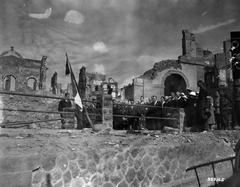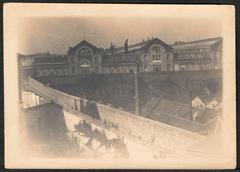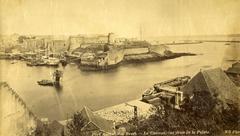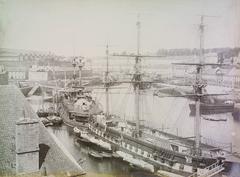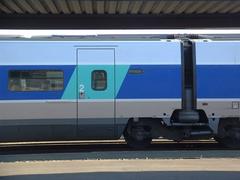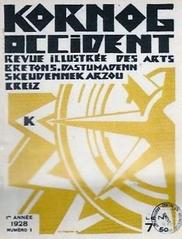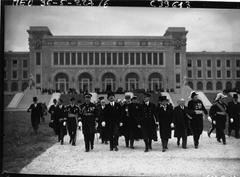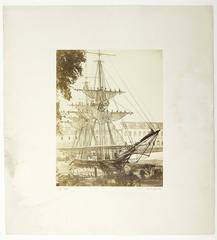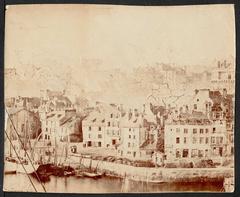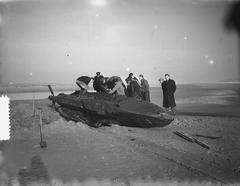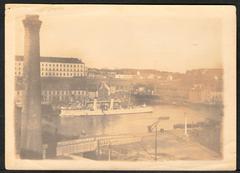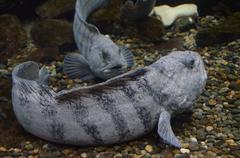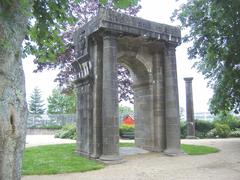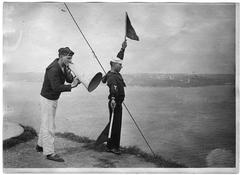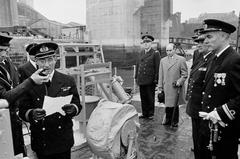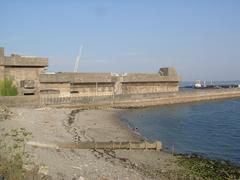Comprehensive Guide to Visiting Parc d’Eole, Brest, France
Date: 01/08/2024
Introduction
Parc d’Eole in Brest, France, is a captivating destination that seamlessly blends historical significance, natural beauty, and cultural richness. Originally an esplanade and later Brest’s first aerodrome until 1922, this site has evolved through various phases of use, reflecting the dynamic history of the region (Trfihi Parks). The park’s transformation into a serene public space was spearheaded by painter Nils Udo and landscape architect Louis Maunoury, who envisioned a natural oasis amidst Brest’s industrial landscape. Their collaboration resulted in a park that emphasizes natural elements like wind and water, paying homage to Aeolus, the Greek god of the wind, and creating a dynamic, ever-changing environment (Petit Futé). This guide will explore the park’s history, key attractions, visitor information, and practical tips for making the most of your visit, providing a comprehensive overview for potential visitors.
Table of Contents
- Introduction
- Origins and Early Use
- Transformation into a Park
- The Role of Wind and Water
- Artistic and Cultural Significance
- Visitor Information
- Travel Tips
- Historical Context of Brest
- Brest’s Post-War Reconstruction
- Cultural Revival and Events
- Conclusion
- FAQ
- Call to Action
Origins and Early Use
Parc d’Eole, located in Brest, France, has a rich and multifaceted history that dates back to the early 20th century. The site originally served as an esplanade that extended into a long open space. This esplanade was notably significant as it hosted Brest’s first aerodrome until 1922. The aerodrome was a pivotal location for early aviation activities in the region, marking Brest’s contribution to the burgeoning field of aeronautics. Prior to its aviation use, the area was utilized as a shooting range for Navy troops, reflecting its strategic military importance (Trfihi Parks).
Transformation into a Park
The transformation of the site into a public park was driven by a desire to create a natural oasis amidst the industrial backdrop of Brest. This vision was brought to life by the collaborative efforts of painter Nils Udo and landscape architect Louis Maunoury. Their goal was to design a space that would starkly contrast with the surrounding industrial environment, offering a serene and natural retreat for visitors. The park’s design emphasizes natural elements, with slopes clad in poplars, birches, heather, and ferns, creating a dynamic landscape that responds to the wind, a central theme of the park (Petit Futé).
The Role of Wind and Water
The park’s name, Parc d’Eole, is a homage to Aeolus, the Greek god of the wind, reflecting the park’s thematic focus on wind and its interaction with the natural environment. The design incorporates elements that highlight the presence and movement of wind, such as the quivering leaves of poplars and birches. Additionally, water plays a significant role in the park’s landscape. A central feature is a cascading waterfall that flows over granite stones, symbolizing the harmonious relationship between wind and water. This feature not only adds to the aesthetic appeal of the park but also creates a soothing auditory experience for visitors (Trfihi Parks).
Artistic and Cultural Significance
The creation of Parc d’Eole was not just a landscaping project but also an artistic endeavor. Nils Udo, known for his nature art, and Louis Maunoury, a respected landscape architect, aimed to create a space that would serve as a living artwork. Their collaboration resulted in a park that is both a natural sanctuary and a cultural landmark. The park’s design and elements are intended to evoke a sense of tranquility and reflection, making it a unique cultural asset in Brest. The park’s artistic significance is further underscored by its ability to provide a stark contrast to the industrial surroundings, offering a space for contemplation and connection with nature (Petit Futé).
Visitor Information
Parc d’Eole is open 24 hours a day, providing unrestricted access to its natural beauty and recreational facilities. While there is no entrance fee, visitors can enjoy various amenities, including sitting areas, a kids’ play zone, and spaces for trips and picnics. Despite its somewhat hidden location near the Saint-Pierre district, close to a retirement home and the Iroise shopping center, the park remains a well-kept secret, often overlooked by many Brestois (Petit Futé).
Travel Tips
- Best Time to Visit: Spring and early autumn are ideal for visiting the park due to the mild weather and blooming flora.
- Accessibility: The park is accessible for visitors with mobility challenges, with paved paths and ramps available.
- Nearby Attractions: Include the Brest Castle, Tanguy Tower, and the Oceanopolis aquarium, making it easy to plan a full day of exploration.
- Photography Spots: The cascading waterfall and poplar-lined walkways are particularly photogenic.
- Special Events: Check local listings for any special events or guided tours that may be taking place during your visit.
Historical Context of Brest
To fully appreciate the significance of Parc d’Eole, it is essential to understand the broader historical context of Brest. The city has a long maritime history and has been a crucial naval base for centuries. During World War II, Brest was heavily bombed by the Allies, resulting in extensive destruction. The post-war reconstruction of the city was rapid, with many buildings constructed using utilitarian granite and concrete. Despite this, Brest has managed to retain some historical landmarks, such as the Brest Castle and the Tanguy Tower, which offer glimpses into its storied past (Wikipedia).
Brest’s Post-War Reconstruction
The aftermath of World War II saw Brest almost entirely rebuilt, with the West German government paying reparations to the city’s homeless and destitute civilians. This period of reconstruction was marked by the use of modern architectural styles and materials, leading to the city’s current appearance. The French naval base in Brest remains a significant military installation, housing the Brest Naval Training Centre and serving as a base for nuclear-armed ballistic missile submarines (Wikipedia).
Cultural Revival and Events
In recent years, Brest has made concerted efforts to revive its cultural heritage, including the promotion of the Breton language through initiatives like Ya d’ar brezhoneg. The city hosts several cultural events, such as the Brest European Short Film Festival and the biennial Brest International Maritime Festival, which celebrates its maritime history with tall ship gatherings, live music, and street performances. These events attract visitors from around the world and contribute to the city’s vibrant cultural scene (Wikipedia).
Conclusion
Parc d’Eole stands as a testament to Brest’s ability to blend natural beauty with cultural and historical significance. Its creation and continued relevance highlight the city’s commitment to providing green spaces that offer both recreational opportunities and a connection to nature. As Brest continues to evolve, Parc d’Eole remains a cherished part of its landscape, embodying the city’s resilience and dedication to preserving its natural and cultural heritage.
FAQ
Q: What are the visiting hours of Parc d’Eole? A: The park is open 24 hours a day.
Q: Is there an entrance fee for Parc d’Eole? A: No, entrance to the park is free.
Q: Are there guided tours available? A: While there are no regular guided tours, special events and tours may be organized occasionally. Check local listings for more information.
Q: Is the park accessible for people with disabilities? A: Yes, the park has paved paths and ramps to accommodate visitors with mobility challenges.
Q: What are some nearby attractions? A: Nearby attractions include the Brest Castle, Tanguy Tower, and the Oceanopolis aquarium.
Q: Where are the best spots for photography in the park? A: The cascading waterfall and poplar-lined walkways are particularly photogenic.
Q: Are there any special events held at the park? A: Special events may be held at the park. Check local listings for details.
Call to Action
For more information about Parc d’Eole and other attractions in Brest, download the Audiala app, check out our related posts, and follow us on social media for the latest updates.
